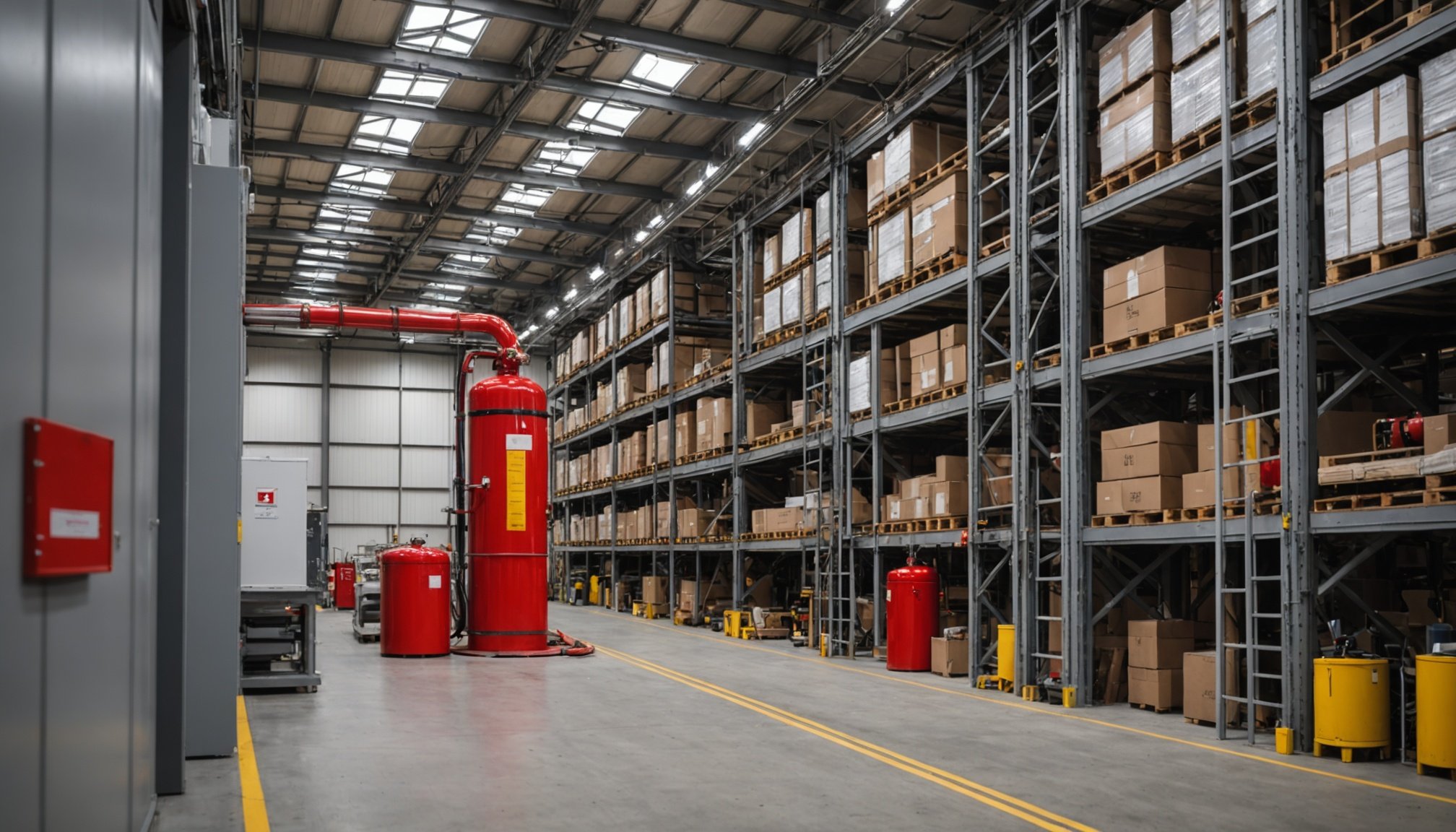Understanding Fire Safety Regulations in the UK
Navigating the landscape of fire safety regulations in the UK requires a firm understanding of its complex structure. Key laws, such as the Regulatory Reform (Fire Safety) Order 2005, define the legal framework all businesses, including manufacturing facilities, must follow. This legislation mandates that employers are responsible for implementing adequate fire safety measures within their premises.
For manufacturing sectors, compliance requirements demand meticulous attention to detail. Facilities must conduct regular risk assessments to identify potential fire hazards specific to their operational processes. This involves assessing factors like the flammability of materials used and ensuring that machinery is maintained to prevent overheating. Moreover, creating a robust fire safety plan detailing evacuation routes and emergency procedures is essential for mitigating risks.
Also to read : Navigating Genetic Modification Laws: Key Strategies for Biotech Companies in the UK
Local authority guidelines further influence compliance, providing area-specific adjustments based on regional characteristics, such as building age or proximity to residential areas. Ignoring these could lead to significant legal and financial repercussions. Thus, it’s not just about understanding national laws; businesses must also engage with local authority prescriptions to ensure complete adherence.
Understanding and implementing these fire safety regulations can significantly reduce the risk of fire incidents, ensuring a safer environment for all.
Also read : Navigating Compliance in Remote Work: The Ultimate Guide for UK Virtual Assistant Services
Risk Assessment and Fire Safety Planning
In the realm of fire safety, conducting meticulous risk assessments is crucial, especially for new facilities. At the core of this process is the identification of potential fire hazards. This can include evaluating material flammability, equipment heating tendencies, and even the alignment of machinery, all of which could contribute to fire risks.
Once these risks are identified, the next step involves developing a comprehensive fire safety plan. This plan should be tailored specifically to the operational processes of the facility. It encompasses detailed emergency procedures, clear evacuation routes, and specific actions to be taken in response to different fire scenarios. The goal is to create a proactive strategy that mitigates potential risks before they result in an actual incident.
Moreover, it’s important to implement strategies for reducing identified hazards. This may involve installing automatic fire suppression systems, using flame-resistant construction materials, or ensuring regular equipment maintenance to prevent malfunction.
By prioritising these aspects of risk assessment and fire safety planning, manufacturing facilities can effectively enhance their overall safety posture. Not only does this protect lives, but it also ensures compliance with UK laws and regulations, safeguarding organisations from legal and financial ramifications.
Designing Fire-Safe Manufacturing Facilities
Creating a safe manufacturing environment begins with facility design. Key design elements, such as the choice of materials and facility layout, significantly influence fire prevention. Selecting flame-resistant materials can help reduce fire spread, while a thoughtful layout can minimize the risk of ignition.
Emergency exits and evacuation routes are crucial components of a fire-safe design. They must be clearly marked and easily accessible, ensuring a swift evacuation in emergencies. These exits should be strategically placed to offer multiple egress points, avoiding congestion and potential panic during an evacuation.
Incorporating advanced fire detection and suppression systems adds another layer of safety. Installing smoke detectors, heat sensors, and sprinklers that are strategically placed to respond rapidly can contain fires before they become unmanageable. Automatic systems can save valuable time, activating before human intervention is possible.
In sum, designing a facility with these elements in mind not only enhances safety but also aligns with compliance requirements mandated by UK law. Manufacturing facilities must integrate these practices to safeguard their operations and employees, proactively mitigating fire risks. Such preparations are part of a holistic approach to ensuring a fire-resilient environment.
Employee Training and Safety Culture
Cultivating a robust fire safety culture within a manufacturing facility is paramount. This begins with comprehensive employee training programs that educate staff about essential safety protocols and emergency procedures. These programs should be mandatory for all team members, ensuring everyone understands their role in maintaining a safe work environment.
Creating a workplace culture where safety is prioritized involves regular safety drills and evaluations to reinforce the training’s effectiveness. Drills simulate potential emergencies, preparing employees to respond calmly and efficiently in real situations. Ongoing evaluations help identify gaps in training and offer opportunities for refresher courses.
Moreover, embedding a safety culture requires visible leadership support. Leaders must consistently communicate the importance of fire safety and recognize employees who demonstrate strong safety practices. This encouragement fosters a sense of responsibility among team members to uphold high safety standards.
It’s crucial to regularly update training materials to reflect new equipment, processes, or regulatory changes, ensuring ongoing compliance. By continuously engaging employees and emphasizing a shared commitment to safety, facilities can significantly enhance their preparedness for fire-related incidents. This proactive approach not only safeguards employees but also ensures adherence with compliance requirements outlined by UK law.
Monitoring and Maintenance of Fire Safety Systems
Maintaining a robust fire safety maintenance program is essential in meeting compliance checks. Regular inspections of fire safety equipment, such as alarms and sprinklers, ensure that these systems function optimally during emergencies. Consistent maintenance helps identify potential faults before they become critical, safeguarding both employees and assets.
Monitoring systems play a pivotal role in real-time alert management. These systems provide immediate notifications in the event of equipment malfunctions or fire incidents. They significantly increase response rates, allowing for prompt intervention and efficient fire control, thereby minimizing damage.
To meet legal obligations, comprehensive documentation and reporting are indispensable. Maintaining detailed records of inspection results and maintenance activities supports compliance during audits. These records also serve as a benchmark for future improvements and safeguard against legal repercussions.
Integrating technology, such as IoT-enabled devices, enhances both monitoring and maintenance. These advanced systems offer automated data insights and predictive maintenance capabilities, allowing facilities to preemptively address issues.
Ensuring rigorous compliance checks through regular monitoring and maintenance procedures not only builds confidence in a facility’s fire safety measures but also aligns with UK fire safety requirements, creating a safer environment for all.
Continuous Improvement and Adapting to Changes
Embedding a culture of continuous improvement within fire safety protocols ensures manufacturing facilities remain agile and responsive to evolving challenges. Establishing a feedback loop is critical for this process, allowing for regular evaluations of existing safety measures. This loop should incorporate insights from employees, safety drills, and actual incidents to refine strategies and enhance overall safety.
Staying abreast of regulatory updates is paramount. UK fire safety laws and industry standards can change, requiring businesses to adapt swiftly. Ensuring that safety plans and equipment align with the most recent regulations prevents legal issues and potential hazards.
Safety audits serve as essential tools for verifying compliance. These audits review all fire safety aspects, from equipment functionality to employee training effectiveness. Conducting audits periodically helps identify gaps, offering a roadmap for improvements.
Facilities should also consider investing in technology that anticipates future needs. For instance, integrating IoT devices can provide predictive insights for preemptive maintenance, reducing risks associated with equipment failure. By prioritising continuous improvement and adapting to changes, manufacturing sites can maintain high compliance levels while ensuring optimal safety for their employees and operations.







